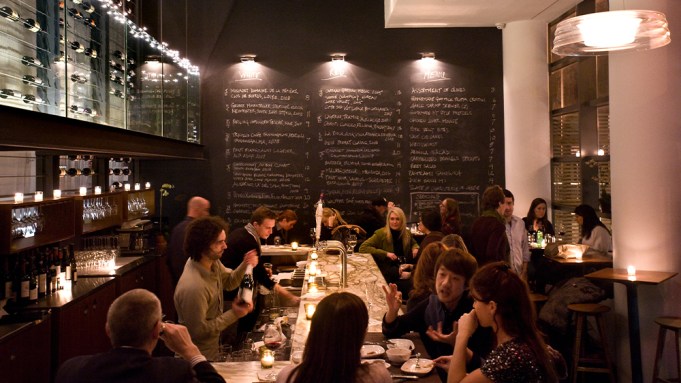Since ancient times, travel has been one of the primary drivers of the spread of wine culture around the world. The Phoenicians first brought wine and then vines and winemaking techniques around the Mediterranean beginning around 1500 BCE and were followed by the Greeks and then the Romans, who expanded winemaking across Europe and as far north as Germany. Grapevines and wine were spread to the New World through colonization and trade, and today we have a culture of “flying winemakers,” international consultants who travel the globe to bring their knowledge and style to a far-flung range of wine regions. At the same time, an increase in post-pandemic travel has turned the tables on the consultants and winemakers, as people returning from trips overseas are requesting the wines they’ve encountered on vacation in the restaurants they frequent back home.
According to a study of global traveler’s intentions published late last year by Visa, “travel has surged post-Covid and there are no signs of retreating.” Call it revenge travel or rebound travel, but we can say from personal experience that planes are full on international routes and Americans are out there with a vengeance. The good news for wine lovers is that increasingly sophisticated travelers are influencing the choices that sommeliers are making when choosing wines for their lists. As direct air routes open up to interesting destinations beyond the grand tour stops, people who are exposed to wine from the likes of Croatia, Greece, Portugal, and southern Italy are taking note of what they’re drinking and asking for bottles back home. While a recent survey of adult U.S. citizens revealed that 49 percent of respondents prefer red wine and 36 percent favor white, the travel-related action on wine lists seems to be on the white side of the menu, which may have to do with the time of year that people travel and the type of food they eat in Mediterranean, Aegean, or Adriatic settings.
Croatia is among our frequent destinations, and we have definitely noticed an uptick in offerings of white wines such as Pošip from Dalmatia and nearby islands, which is no doubt driven by Game of Thrones–themed travel to Dubrovnik. Travelers venturing into the Croatian area of Istria after visiting nearby Venice are also encountering Malvasia Istriana, another native white variety that’s been popping up back home. Farther south, Assyrtiko from Santorini has risen from obscurity to become a mainstay at wine bars and restaurants, and a great deal of thanks is most likely owed to the Instagram-worthiness of the island’s white walls topped with blue domes, not to mention the incredible seafood served there.
Travelers are returning from Santorini with a taste for Assyritiko
Santorines/iStock/Getty Images Plus
Kristen Goceljak, wine director at Saga Hospitality Group in downtown Manhattan, said she is seeing an increased demand in Greek wines thanks to diners being introduced to them during vacations. The wines overdeliver for their price, she explained, especially as compared to more classic regions. James Fairbrother, a wine and beverage consultant who was formerly the associate director of brand strategy and operations at Ardesia Wine Bar, noticed escalated interest in Assyrtiko at the establishment; he considers the crisp, mineral-driven white to be a “Sauvignon Blanc alternative.” The craze for Assyrtiko has also been noted by Toni Calderon, CEO of O.N.E. Hospitality Group in Pennsylvania, who pointed out that clients are asking for the wines they’ve tasted on travels aboard, Assyrtiko included. “The conversation is different at tables; you can tell that people are getting out there,” she told us, adding, “When they are looking at wine lists, since they have traveled, they are asking about different regions.”
Portugal is another country high on traveler’s bucket lists and sommeliers’ shopping lists. Andrea Morris, beverage director at Essential by Christophe on New York’s Upper West Side, told us she has been exploring whites from Portugal, which she says are natural pairings for much of the seafood on Essential’s menu. She credits her ability to diversify her Portuguese offerings to the rising number of importers bringing in excellent examples as well as clients’ interest in the wines following recent travel there, stating that it seems like “every New Yorker with an Instagram account has vacationed in Portugal since 2021.” Luke Boland, corporate wine director for restaurant group Hospitality Department, which operates Press Club Grill and Point Seven, drills down even further on Portuguese whites, pointing out that Point Seven is now offering a few versions of Arinto, a white variety from the Azores. “This grape drinks almost like a bone-dry Riesling with a dash of sea salt added,” Boland says. “It’s refreshingly high in acid, textural and citrusy, but it has that coastal sea spray kind of minerality that makes it sing with our seafood-based cuisine” We have also seen a wider variety of high-quality Vinho Verde and single-variety Alvarinho on wine lists on both coasts, again driven by the Portugal travel craze.
Maybe it’s the White Lotus effect, but we have observed a lot more Sicilian wine as well, especially from the volcanic soils of Mount Etna, on by-the-glass and bottle lists around New York and across the country. Made with Carricante, Etna Bianco is known for its high acidity, citrus flavors, and strong minerality. Kristie Grey, food and beverage director at McCleary’s Public House in Marietta, Penn., said she has been getting a lot of requests for wines from Mount Etna as well as other areas in southern Italy. She attributes the escalation to the number of guests that are recently back from that part of the world. It’s been said that travel makes you more interesting, and while that may depend on the individual, it is certainly adding a whole new dimension to wine lists. We can’t wait to see what the next travel hot spot will be and how it will affect what we’re all drinking.


